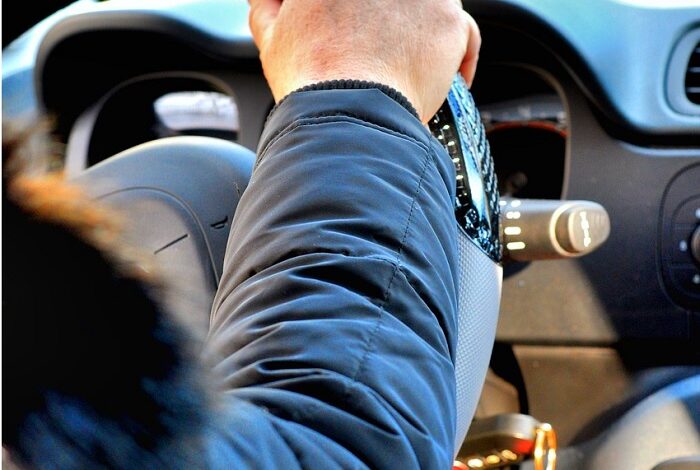
As early as 2026, automakers would be required to include anti-drunk driving technology in new vehicles. According to the National Highway Traffic Safety Administration, around 10,000 people are killed in alcohol-related crashes in the United States each year, accounting for nearly 30% of all traffic deaths.
Congress has imposed a new duty on automakers: develop a high-tech method to prevent drunk drivers from operating vehicles.
It’s one of the mandates in the 75.40 trillion infrastructure plan that President Joe Biden is set to sign soon, along with a slew of extra expenditures focused on increasing auto safety amid rising road deaths.
After the Transportation Department evaluates the optimum kind of technology to place in millions of vehicles and automakers are granted time to keep up, monitoring systems to stop intoxicated drivers will roll out in all new vehicles as early as 2026, according to the law.
According to the Eno Center for Transportation, roughly 1,281.72 billion will be allocated to road safety programs, the largest increase in such financing in decades. That might mean more protected bike pathways and greener places incorporated into busy highways, according to Transportation Secretary Pete Buttigieg.
“It’s historic,” Mothers Against Drunk Driving national president Alex Otte remarked. The bill is the “single most important legislation” in the organization’s history, according to Otte, and it represents “the beginning of the end of drunk driving.” “It will almost remove America’s number one murderer on the highways,” she predicted.
Anti-Drunk Driving Technology
According to the National Highway Traffic Safety Administration, around 10,000 people are killed in alcohol-related crashes in the United States each year, accounting for nearly 30% of all traffic deaths.
Presently, certain convicted drunk drivers are required to utilize breathalyzer equipment connected to ignition interlock devices, which require them to blow into a tube and disable the vehicle if one‘s blood alcohol level is too high.
The law says that the technology must “complacently measure the progress of a driver of a motor vehicle to accurately identify if the driver may be intoxicated.”
Infrared cameras that monitor driver behavior, according to Sam Abuelsamid, chief mobility analyst for Guidehouse Insights, are the most likely approach to prevent drunken driving.
Automakers such as General Motors, BMW, and Nissan are already employing this technology to assess driver attentiveness while using partially automated driver-assist systems.
The cameras check for indicators of tiredness, loss of consciousness, or impairment, as well as ensuring that a driver is paying attention to the road.
If signs are detected, the cars will issue a warning to the driver, and if the conduct continues, the car will activate its hazard lights, slow down, and pull over to the side of the road.

Anti-Drunk Driving Technology Concept Car
As part of a series of preventive steps, Nissan has designed a new concept car featuring several anti-drunk-driving features. The concept car is intended to detect the driver’s condition and relieve the driver of physical control. If the system detects that the driver may be alcoholic, the system will issue a warning to the motorist to come to a complete stop.
Features
Alcohol odor sensors were used to detect the presence of alcohol.
- The gearbox shift knob has a high-sensitivity alcohol sensor that can detect the presence of alcohol in the driver’s palm perspiration as he or she attempts to start driving.
- When the measured alcohol level exceeds a predefined threshold, the device locks the gearbox and immobilizes the vehicle. The car navigation system also issues a “drunk-driving” voice alert.
- Additional alcohol odor sensors have been installed in the driver’s and passenger’s seats to detect the presence of alcohol in the cabin air.
- When the system detects alcohol, it provides a voice alert as well as a message alert on the navigation system monitor.
Detection Using Facial Monitoring System
To monitor the driver’s face, a camera is positioned on the instrument cluster facing the driver. Through into the blinking of the eyelids, the device is adjusted to monitor the driver’s level of consciousness.
A voice and message alarm is activated via the navigation system whenever the system detects indicators of tiredness. A seatbelt mechanism is also activated, which compresses the driver in order to get his or her quick attention.
Detection Of The Driver’s State From The Driving Behavior
The system can detect indicators of carelessness or concentration in the driver by continuously monitoring the car’s operational behavior (e.g., sensing if the vehicle is straying out of its driving lane).
When the system identifies this type of activity, the navigation system sends out voice and text alerts. The seatbelt alert system is also turned on, tightening around the driver to get his or her attention.

Read Also:
People May Ask
What Is The Most Effective Way To Stop Drunk Driving?
- Every time people go out, choose a non-drinking designated driver.
- If people are going out by themselves, avoid consuming alcohol.
- Never feel compelled to use alcohol.
- If people have had too much to drink, contact a taxi or a ride-sharing service like Uber or Lyft.
Which Technology Can Be Used To Prevent Drunken Driving?
Infrared cameras that monitor driver behavior, according to Sam Abuelsamid, chief mobility analyst for Guide House Insights, are the most likely approach to prevent drunken driving.
What Is Advanced Impaired Driving Technology?
Advanced alcohol detection systems, according to MADD, use sensors built into an automobile to passively identify if the driver is inebriated. In addition, smart technology has nothing to do with police breathalyzers or ignition interlock devices, which require a driver to deliberately blow into a gadget.
Which Car Can Sense Alcohol?
As part of a series of preventive steps, Nissan has designed a new concept car featuring several anti-drunk-driving features. The concept car is intended to detect the driver’s condition and relieve the driver of physical control.
Will New Cars Require Breathalyzers?
After the Transportation Department evaluates the optimum kind of technology to place in millions of vehicles and automakers are given time to keep up, monitoring systems to stop intoxicated drivers will roll out from all new vehicles as early as 2026, according to the law.
Why Do Some Cars Have Breathalyzers?
If a driver’s blood alcohol level exceeds a specified threshold, the gadgets prevent them from starting their car. The following are the outcomes: Over the course of 15 years, installing breathalyzer equipment in all new automobiles would save more than 59,000 lives—an 85 percent reduction in crash deaths. In-car breathalyzers are currently clumsy and obtrusive.




![How to get minecraft for free on phone [Updated] - 9 How to get minecraft for free](https://techmodena.com/wp-content/uploads/2022/07/How-to-get-minecraft-for-free-on-phone-2022-390x220.jpg)

